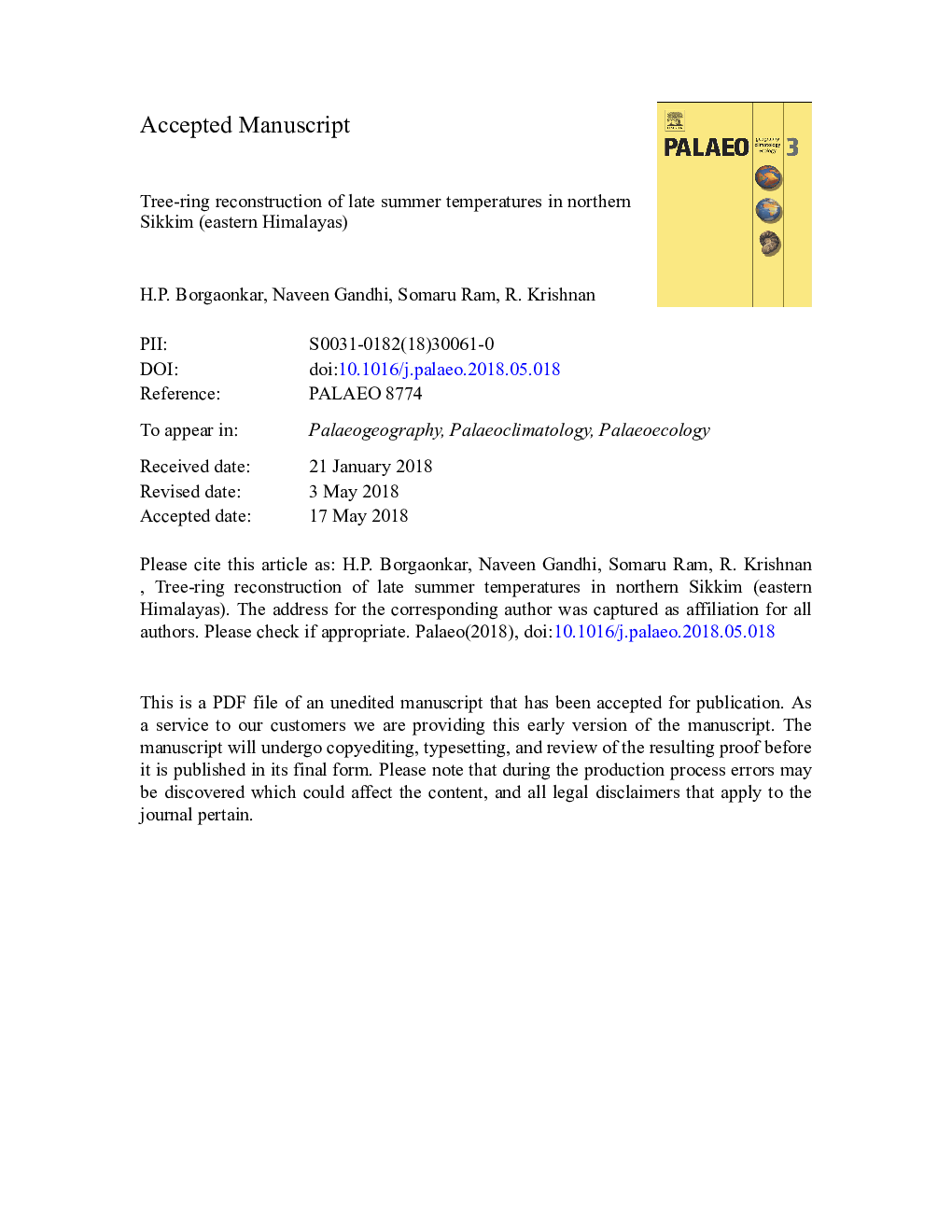| کد مقاله | کد نشریه | سال انتشار | مقاله انگلیسی | نسخه تمام متن |
|---|---|---|---|---|
| 8868148 | 1622088 | 2018 | 36 صفحه PDF | دانلود رایگان |
عنوان انگلیسی مقاله ISI
Tree-ring reconstruction of late summer temperatures in northern Sikkim (eastern Himalayas)
ترجمه فارسی عنوان
بازسازی درختان حلقه از دماهای تابستان در شمال سیکیم (شرقی هیمالیا)
دانلود مقاله + سفارش ترجمه
دانلود مقاله ISI انگلیسی
رایگان برای ایرانیان
کلمات کلیدی
موضوعات مرتبط
مهندسی و علوم پایه
علوم زمین و سیارات
فرآیندهای سطح زمین
چکیده انگلیسی
The Sikkim region of the Himalayas is among one of the most highly sensitive hotspots to climate change due to its fragile mountainous environment and rapidly growing population, which exert significant impacts on regional ecosystem factors, including biodiversity and hydrology. Limited observational data coverage in space and time for the high-altitude mountainous region impedes our understanding of climate change and its impact on the environment. In this paper, we develop a 437-year tree-ring width index chronology of Tsuga dumosa (D.Don) Eichler in northern Sikkim as a climate proxy. The substantial dendroclimatic potential of this proxy is evidenced in various statistics computed from the tree-ring chronology. An analysis of the tree-ring chronology indicates a strong negative relationship between late-summer mean temperatures (July-August-September; JAS) and tree growth. This relationship enables us to reconstruct the JAS mean temperature over northern Sikkim since 1705 C.E. The 304-year (1705-2008 C.E.) reconstructed temperature series shows similar warm and cool epochs, which have been observed in many other temperature reconstructions in the region and other proxy records of glacial fluctuations. An overall steady decreasing trend in the regional surface temperature is observed since 1705 C.E., while an increasing trend with intermittent, short and cool epochs are noticed from 1850 C.E. to the present. Prior to the observational period (before 1901 C.E.), cold conditions (XÌ - 1Ï) prevailed during 1816-1819, 1831-1837, 1856-1859, and 1884-1887 C.E, with extremely cold conditions (XÌ - 2Ï) occurring in 1816, 1817, 1832, 1833, 1857, 1877, 1884, and 1885 C.E; Warm conditions (XÌâ¯+â¯1Ï) prevailed during 1713-1735 and 1823-1827 C.E, with extremely warm (XÌâ¯+â¯2Ï) conditions occurring in 1724, 1823, 1824, and 1825 C.E. Global teleconnections of the reconstructed temperature variations indicate the important roles of the Pacific Decadal Oscillation (PDO), El Niño Southern Oscillation (ENSO), and volcanic eruptions as drivers of temperature variations in the Sikkim region of the Himalayas.
ناشر
Database: Elsevier - ScienceDirect (ساینس دایرکت)
Journal: Palaeogeography, Palaeoclimatology, Palaeoecology - Volume 504, 1 September 2018, Pages 125-135
Journal: Palaeogeography, Palaeoclimatology, Palaeoecology - Volume 504, 1 September 2018, Pages 125-135
نویسندگان
H.P. Borgaonkar, Naveen Gandhi, Somaru Ram, R. Krishnan,
